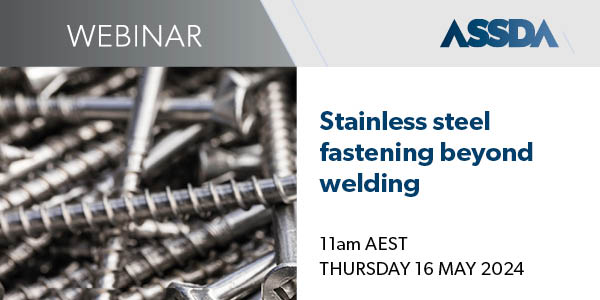Webinar Outline
Traditionally, welding is the go-to method for joining stainless steel components. However, situations may arise where welding is impractical or undesirable, such as in short-term installations, confined spaces, or environments prone to fire hazards. In such cases, alternative fastening methods offer practical solutions. This webinar delves into the realm of stainless steel fastening beyond welding, exploring a range of techniques and considerations for effective and versatile connections.
Outline:
- Introduction
- Brief overview of traditional welding for stainless steel components
- Introduction to alternative fastening methods
- Types of fasteners
- Definition and examples: clips, rivets, threaded connections, etc.
- Pros and cons of each type
- Importance of stainless steel properties
- Key properties essential for effective fastening
- Understanding material characteristics for optimal performance
- Standards
- Overview of ISO 3506 and its significance
- Compliance with corrosion and mechanical property standards
- Address challenges
- Galling: causes, prevention, and mitigation strategies
- Galvanic effects: identification, impact, and mitigation methods
- Managing vibration and fatigue
- Understanding vibration, fretting, and fatigue phenomena
- Techniques for controlling and minimising their effects
- Innovative joining techniques
- Friction bolting: principles and applications
- Exploring friction stir joining and its limitations
- Alternative methods
- Consideration of moderate temperature soldering and brazing
- Evaluation of adhesive applications and limitations
- Practical examples
- Showcase of various fastener types from ASSDA’s 2023 Stainless Steel Stock Guide
- Tour of the fasteners section in ASSDA’s Australian Stainless Reference Manual 2020
Presenter: Dr Graham Sussex, ASSDA Technical Specialist
Graham is a materials expert with over 30 years of experience and more than 600 technical publications to his name. Stainless steel is his specialty.
Cost:
- FREE for ASSDA Members
- $45/person NZSSDA Members and Weld Australia Members
- $85/person Non-Members
This webinar will be hosted by Zoom.
